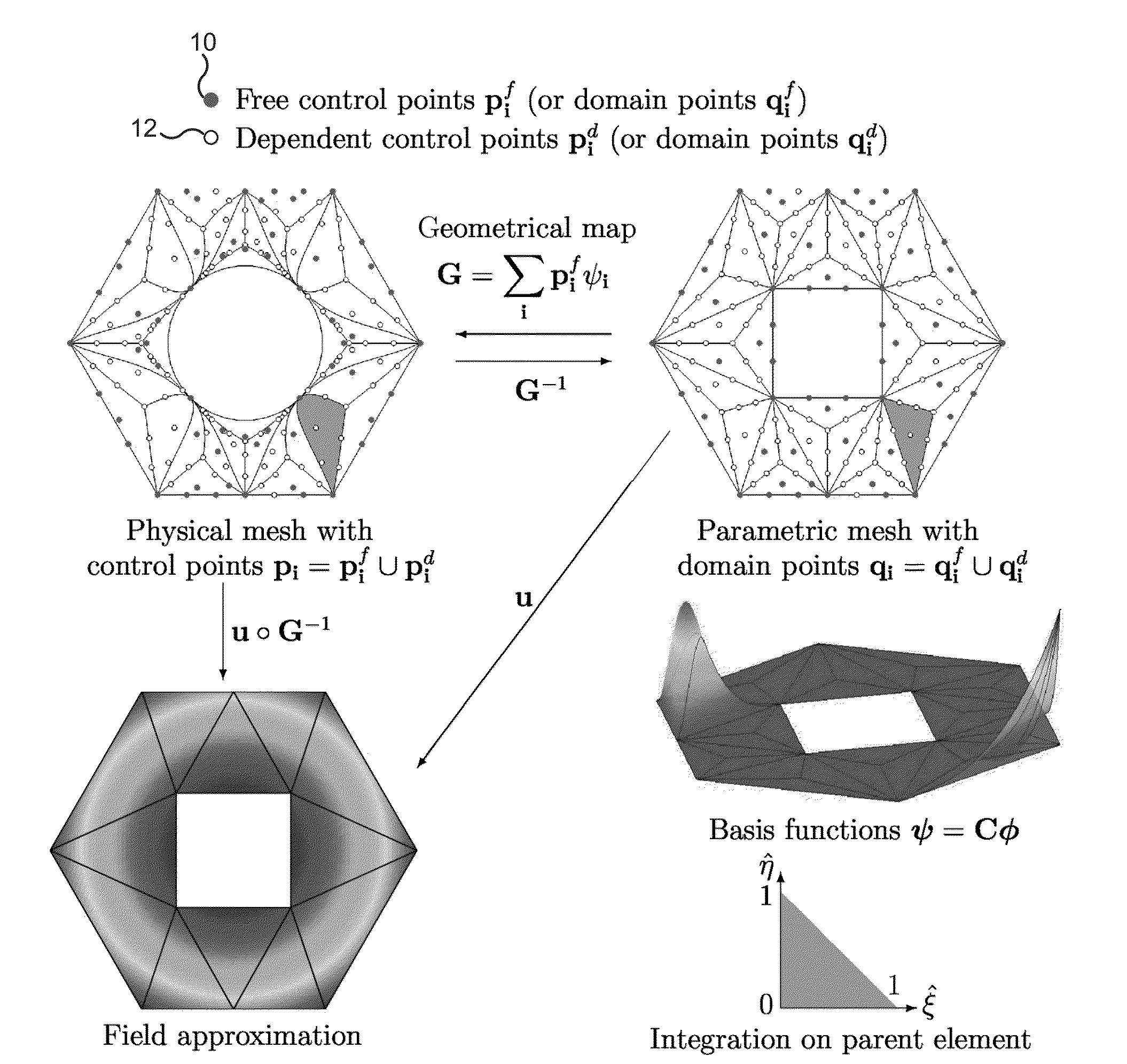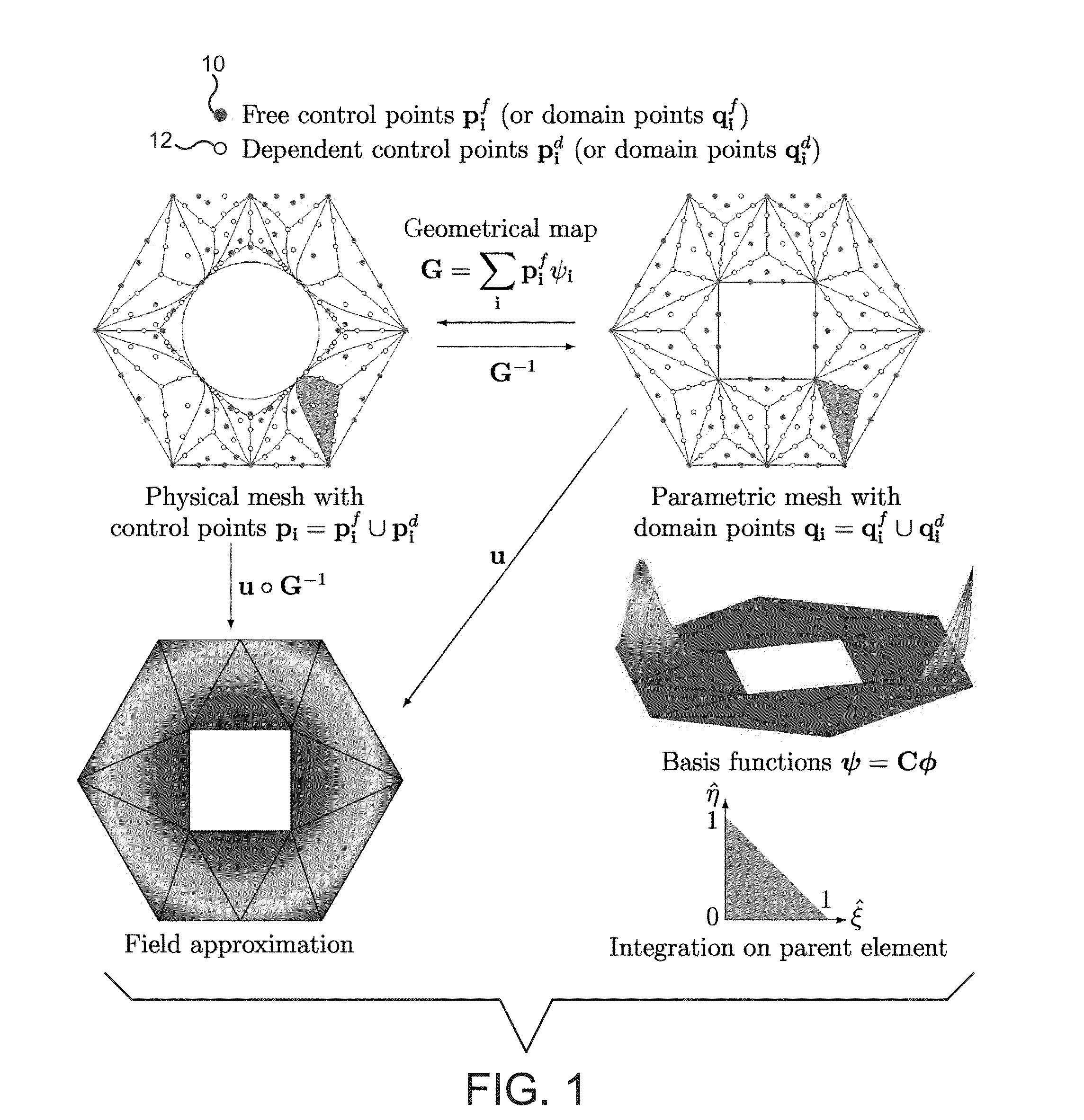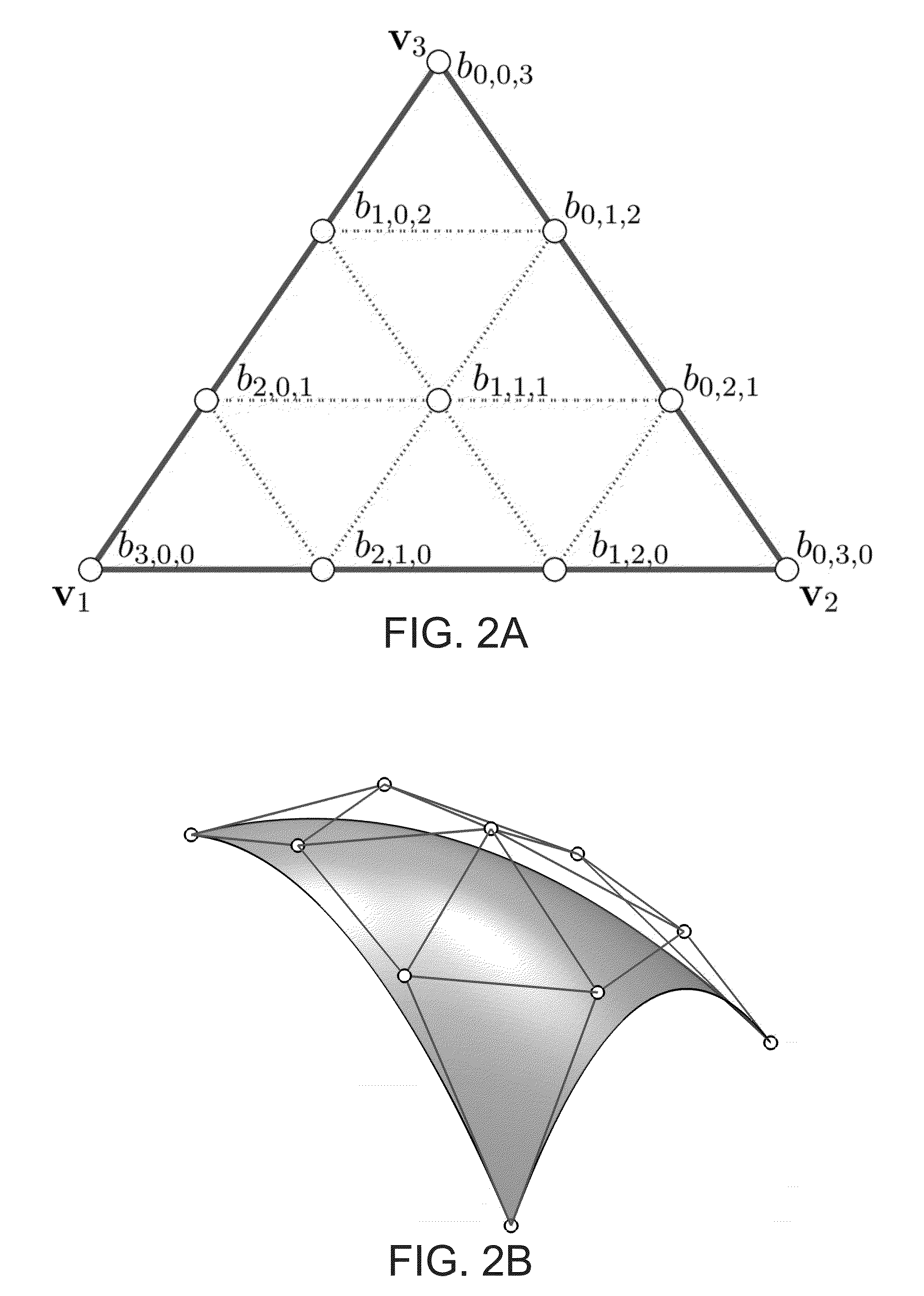System and method for isogeometric analysis
a system and method technology, applied in the field of computer-aided design systems and methods, can solve the problems of difficult to break up curved surfaces into the types of elements, requiring the use of an approximate version of the computer-modeled part, and requiring analysis-suitable t-splines
- Summary
- Abstract
- Description
- Claims
- Application Information
AI Technical Summary
Benefits of technology
Problems solved by technology
Method used
Image
Examples
Embodiment Construction
[0110]As will be described, the present disclosure provides an approach that can provide convergence for all Cr rTBS elements based isogeometric analysis in the context of h-refinement, even relative to a criteria for optimal convergence. Approximation power and convergence rates are used to evaluate the performance of numerical schemes for solving PDEs. The NURBS space has been proved to have full approximation power and deliver an optimal rate of convergence as the classical finite element spaces. Similar approximation estimates that are optimal with respect to the polynomial degree of the underlying spline space have also been developed for T-splines that are defined on a particular two-patch structure. However, no convergence results have been reported for T-splines defined on more generalized T-meshes that include extraordinary points, which usually require additional continuity constraints on the surrounding control points to achieve G1 continuity.
[0111]As will follow, an appr...
PUM
 Login to View More
Login to View More Abstract
Description
Claims
Application Information
 Login to View More
Login to View More - R&D
- Intellectual Property
- Life Sciences
- Materials
- Tech Scout
- Unparalleled Data Quality
- Higher Quality Content
- 60% Fewer Hallucinations
Browse by: Latest US Patents, China's latest patents, Technical Efficacy Thesaurus, Application Domain, Technology Topic, Popular Technical Reports.
© 2025 PatSnap. All rights reserved.Legal|Privacy policy|Modern Slavery Act Transparency Statement|Sitemap|About US| Contact US: help@patsnap.com



